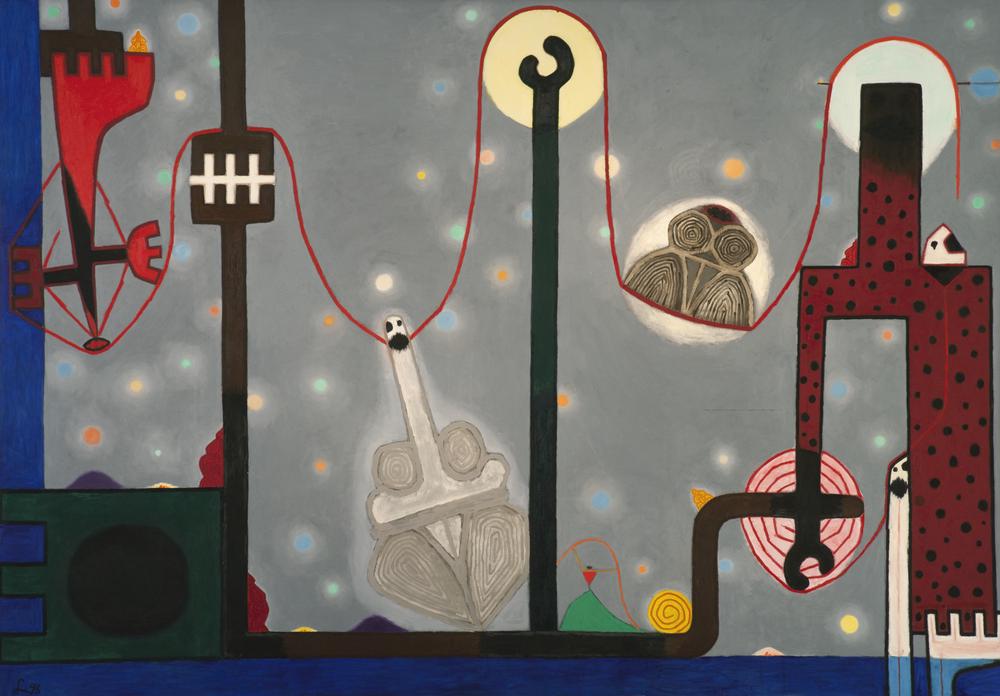Frank Lobdell. Sun Discs and Circuits
Frank Lobdell’s first paintings after returning from World War II made use of graphic symbols with ambiguous reference to paleolithic artifacts that art critic Thomas Albright likens to “boomerangs, rhombuses, sun discs surrounded by spinning rays, wing shapes, jaw-bones, and ragged claws.”1 He developed his own pictography that was influenced by prehistoric motifs—like the newly discovered Paleolithic cave paintings at Lascaux he learned of while studying in Paris in 1950 at the Académie de la Grande Chaumière—and by disturbing corporeal imagery (bones, tendons, intestines) he had seen on the frontlines of war.2 Biomorphic shapes dominated his painting but by the 1980s his forms shed their gloom and he opened up his scale and palette. In the monumental painting 2.22.93–4.8.93 Bleeker (1993), orbs float freely; rather than embody nature, Lobdell’s forms take on a geometric, even mechanical, semblance. “The new structures resembled meanders, fences, circuits, and conduits,” wrote art historian Caroline A. Jones, “nature squared and trued with a carpenter’s rule.”3
Thomas Albright, Frank Lobdell: Paintings and Monotypes (San Francisco: San Francisco Museum of Modern Art, 1983), 10–11. ↩︎
Susan Landauer, The San Francisco School of Abstract Expressionism (Berkeley: University of California Press, 1996), 143. ↩︎
Caroline A. Jones, Frank Lobdell: Works, 1947–1992 (Stanford, CA: Stanford University Museum of Art, 1993), 25. ↩︎
